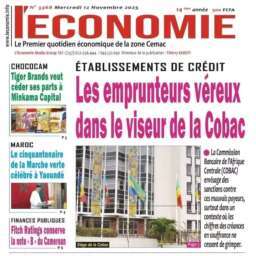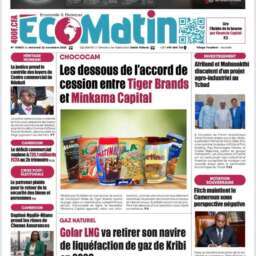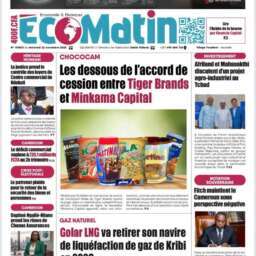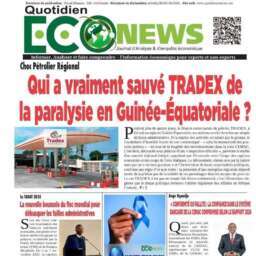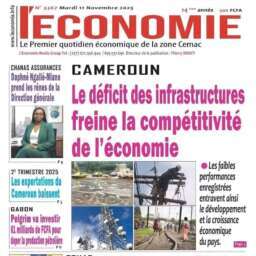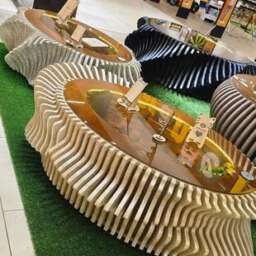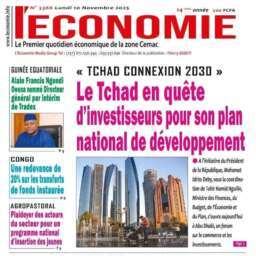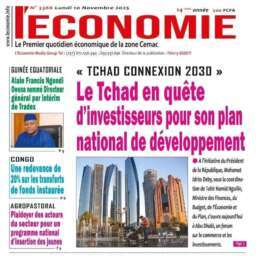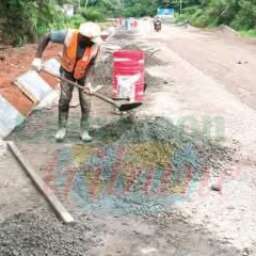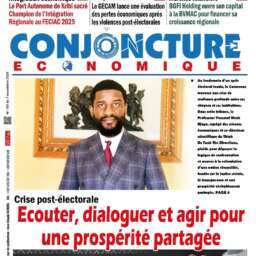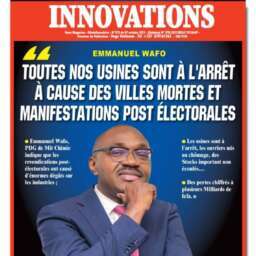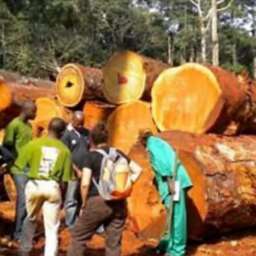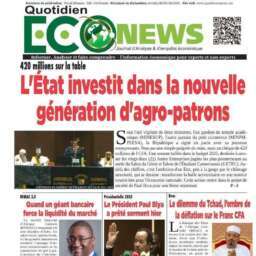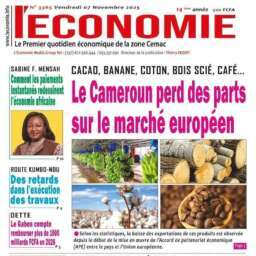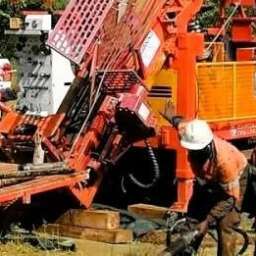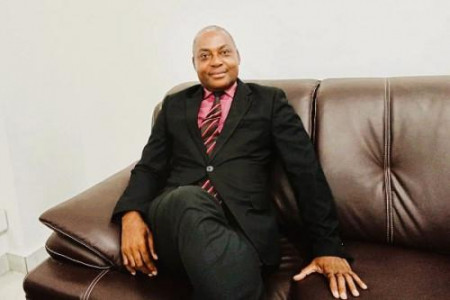(Business in Cameroon) – Louis Banga Ntolo, CEO of the Central African Stock Exchange (BVMAC), shares his vision and the challenges of leading an evolving institution. Despite criticism about the market’s slow growth, BVMAC is making progress, with more listed companies and a wider range of financial products. He also discusses innovative plans like stock splitting to attract small investors including motorcycle taxi drivers and digitalizing transactions to make the market more accessible. Here’s how BVMAC aims to become a key driver of economic development in Central Africa.
BVMAC still struggles to attract many companies despite the merger of the CEMAC stock exchanges a few years ago. Many people believe the market isn’t really working. From your perspective, what indicators show that progress is being made?
Louis Banga Ntolo: Statistically, we are still a small stock exchange, but things are moving forward. Before the merger, we had three companies listed in Douala and one in Libreville. After the merger, the regulator requested the delisting of one company, bringing us down to three. Today, we have six, which is a 100% increase.
On the bond market, we had about CFA650 billion in listed debt at the time of the merger. Now, we have over CFA1.3 trillion, meaning we’ve doubled. This shows steady growth in both segments over the past four to five years, even though our overall figures are still relatively small compared to our potential.
We also see progress in the increasing number of transactions. We introduced a stock index at the end of 2023, whereas there was none at the time of the merger. Previously, there was only one trading session per day in Libreville and three in Douala. Now, we have daily trading from Monday to Friday.
The stock market ecosystem has also expanded. Before the merger, there were only six brokerage firms; now, we have 25. Asset management companies have grown from just one or two to over 15.
We’ve also innovated in financial products. The market is not stagnant or dormant, as some media reports suggest. There is real, visible, and verifiable progress. While we are not yet at the level of other comparable stock exchanges, we are moving in the right direction.
Some IPOs have been announced, including two financial institutions: BGFI Holding and Commercial Bank Cameroon (CBC). The CEO of BGFI has confirmed the plan, and CBC also intends to sell part of its capital. What’s the status of these initiatives, and when can we expect them to materialize?
Louis Banga Ntolo: We fully support the decision of the chairman of BVMAC, who is also the chairman of BGFI Holding, to bring the entire holding to the stock exchange. The structuring of this operation is complete, and the regulator has already been consulted. The IPO is expected in 2025, and we hope it will take place before the end of the first half of the year before June.
This will be a major transaction, as the fundraising could range between CFA80 billion and CFA100 billion. That’s a significant amount for an IPO. The process is already well advanced, and the regulator is aware of its progress.
As for CBC, the government has announced its plan to exit the bank’s shareholding. The state stepped in to rescue the bank during a difficult period, and thanks to a senior official formerly from the Central African Banking Commission (COBAC), CBC successfully completed its restructuring. Now, the government is focusing on privatization and is looking for a strategic partner with expertise in banking management. A group of employees has also submitted a counterproposal under a management buyout (MBO) structure, and the government is currently reviewing all options.
What people in the CEMAC region and especially in Cameroon are waiting for is to see this key financial institution listed so investors can show their confidence in its future and leadership. If this transaction succeeds, it will validate the government’s decision to intervene in the bank’s management without creating systemic risks in the financial sector. Unlike the BGFI operation, I can’t give an exact timeline for CBC, but the government has announced its plan for 2025.
Beyond these two IPOs, I can also confirm that another shareholder and board member of BVMAC, an insurance company, has expressed interest in going public in 2025 or 2026 by selling 40% of its shares on the regional market. These positive signals reinforce what we’ve been saying: we are building a solid foundation, and that takes time. We are taking a careful, strategic approach to protect investors and develop a financial market that meets international standards with the support of development partners. At the same time, we continue to explore, with brokerage firms and COSUMAF (the market regulator), which public companies could be listed in the future.
You mentioned an insurance company one of BVMAC’s shareholders planning to sell 40% of its shares. Which company is it exactly?
Louis Banga Ntolo: I prefer to let the company’s executives make the official announcement. However, those familiar with the market and BVMAC’s governance structure will quickly figure it out. I don’t want BVMAC to announce something that should come from the company itself. This decision needs to be approved internally by its governing bodies before it becomes public.
Is it possible to understand how the BVMAC market infrastructure works, what its environment is like, and what contextual elements make it unique compared to others in Sub-Saharan Africa?
Louis Banga Ntolo: When we talk about infrastructure, it’s a term that’s widely used. It refers to the quotation tool, a software, since the primary mission of a stock exchange is to list securities. We need to provide a platform and intermediaries so that securities can be traded, allowing participants to connect and carry out their buy and sell transactions.
Currently, BVMAC uses a tool called NSC (New Quotation System) version 900, developed by Euronext. Euronext has since upgraded the system to a version named Optic, but we’ve retained the older version. We haven’t even begun to explore this version to a fraction of its capabilities. It’s a multi-location version that could have helped another exchange, but since it’s no longer updated by Euronext, we can’t deploy it freely. If there’s an issue with certain mechanisms that only the original developer can address, we find ourselves stuck.
To mitigate these potential weaknesses, we’ve put in place protective measures. First, we duplicated this infrastructure, which is currently housed at BVMAC’s premises. In the coming weeks, we plan to relocate another backup to a recovery site in Yaoundé, so we can quickly reboot in case of a major incident, like the World Trade Center disaster in the U.S.
Our infrastructure has proven its robustness. With each reform, it demonstrates its adaptability. For example, we weren’t sure if it could calculate a stock index, but activating the PFI (Index Platform) 2 module allowed us to do so with no issues. We are also testing its capacity to handle an unlimited number of shares during stock splits, checking if it can manage 10 to 15 million shares, and the tests are proving successful.
We’ve also set up several firewalls to protect the core of the system. Brokerage firms connect remotely via the PAM (Market Application Post) module, but they can’t access the core NSC server, which is placed in a “demilitarized zone” (DMZ). Despite using relatively outdated antivirus software, we’ve created a solid protective shell around this infrastructure to shield it from external threats. Right now, our main risk is the destruction of the building, since the backup is also housed there. That’s why we’re working on deploying it in Yaoundé.
What’s the progress with the states that committed to listing about fifteen companies on the stock exchange? What are the different stages of development on these files?
Louis Banga Ntolo: On this process, as you know, five of the six CEMAC countries have submitted lists. The merged list had 17 companies, two of which are currently listed: the National Bank of Equatorial Guinea and the Gabonese reinsurance company SGC-RE.
In Cameroon, processes are underway, including with ADC (Cameroon Airports), who just announced they’ve hired a brokerage firm to assist them. This is relatively recent news. This company is already advancing in the process and has reached a fairly advanced stage. We hope the remaining 10 months of 2025 will be used to complete this operation. The Cameroonian government is closely monitoring the coordinated process for certain companies, including Sodecoton, CHC (Cameroon Hotels Corporation), and the Port of Douala. We are optimistic that in Cameroon, one or two companies will follow suit, reducing the list to 13.
We’ve also learned that in Equatorial Guinea, things are progressing for the two remaining companies on the list. However, we don’t have a clear timeline for the telecommunications or water companies’ listings.
As for Chad, which hadn’t initially provided a list, we’ve received encouraging news that the Chadian government is considering privatizing two companies. We’re currently seeking a meeting to discuss the possibility of including these identified companies, such as a cement factory, in the regional process. With stronger political will, these companies could be brought to market more quickly, rather than proceeding with private deals that might not allow the government enough time to evaluate the structuring, valuation, and share distribution to the Chadian people.
Overall, we’re seeing a positive momentum at the CEMAC level. It took almost 16 years to merge the market. We believe we won’t need as much time to accelerate this dynamic. The turning point will likely come in 2026. I’m almost certain that significant decisions, some of which I can’t reveal yet, are currently being prepared and will drive an overall dynamic.
We must also view the financial market as a capital market, evolving alongside the money market. If we could replicate the dynamics of the money market, with its 6,000 billion in outstanding debt, the criticisms would be fewer. The same players and issuers are involved in both markets. We’re working with the Central Bank to create bridges between our markets, so that CEMAC as a whole can benefit, beyond just individual interests.
We need to mobilize resources from CEMAC citizens and promote financial inclusion. Thousands of billions in unbanked savings are circulating within the community. These are challenges that could energize our markets, and we are actively working in that direction.
You recently mentioned stock splitting as a way to make the market more accessible to small investors. Was this suggestion driven by a real concern about high stock prices?
Louis Banga Ntolo: Yes, stock splitting is a tool to boost trading in the secondary market. It’s also a way to promote financial inclusion and support the push for digitalization.
We realized that stock prices can be prohibitively high, especially for certain segments of the population in the CEMAC region. On top of that, acquiring financial instruments isn’t an easy process. You need a bank account to buy stocks, and that remains the foundation of any transaction.
But since telecom operators entered the picture, consumption habits have changed in CEMAC. A lot of people now use their mobile wallets as their primary bank account, for savings and for all financial transactions. However, mobile transaction regulations don’t allow for larger-scale transactions. Still, with the high penetration rate of mobile phones, tens of millions of people in the region now own one.
Our goal is to give these people a chance not only to save in their wallets but also to buy financial instruments securely, earn returns, or contribute to infrastructure development in their countries. The financial market shouldn’t just be a way to enrich people. A motorcycle taxi driver, for instance, should feel proud that he’s helped fund the construction of a new bridge that will benefit him. But if the entry point is too high like CFA5,000 or CFA10,000—then he’ll remain excluded.
Stock splitting will allow, using the provisions of the OHADA Uniform Act, for stock prices to be made more accessible. Initially, OHADA set a stock price at CFA5,000, then CFA10,000. Since 2014, a company can set the nominal value of a share at any price. In West Africa, companies like Sonatel, which drives the BRVM, have a nominal share value of CFA100. Even if the stock is valued five or six times higher in the market (CFA600), it’s still accessible, and the buyer gets all the rights voting rights, dividend rights, access to financial information, etc.
To implement stock splitting, companies that are already listed will need to hold an extraordinary general meeting to amend their statutes. For example, a company whose shares are currently priced at CFA200,000 could divide that by 20, bringing the price down to CFA1,000 per share. When that happens, the whole CEMAC region will be buzzing, and the billions in mobile wallets could shift toward the market.
For new companies, we’re asking that at least 2 million shares be sold before they enter the market. This will ensure that the shares are priced at accessible levels between CFA500 and CFA4,000.
Companies often worry about managing general meetings with potentially thousands or even hundreds of thousands of shareholders. The solution is to organize hybrid meetings, where shareholders can participate digitally, and voting can be securely done online.
This structural reform is crucial, even though it might cause some initial overflow. We want brokerage firms, which will be handling many orders, to process them digitally rather than by phone or on paper. Each investor will be able to use an app for transactions, and the brokerage will be able to send information about their account, transactions, fees, and dividends.
This reform is a top priority for 2025. We started working on it nearly two years ago, and it’s now close to completion. We’ve already secured partnerships to help us automate key processes.
The latest market trends show that there is almost always a much higher volume of stocks available than there is demand. Some experts believe that, beyond stock splitting, digitizing transactions and payments could be part of the solution. Do you agree with this perspective?
Louis Banga Ntolo: Yes, digitization is indeed a key part of the solution, as I’ve mentioned before. It’s about creating multiple channels to access financial instruments, beyond just signing an order and submitting it to the bank. Investors should be able to send orders automatically, via an app, to their intermediaries. These intermediaries need to invest in apps they can’t build themselves, but which specialized providers can supply them with.
When people think of digitization, they also think about online exchanges. This process would allow an investor to complete their transactions exclusively through a platform provided by a market intermediary. If this system is in place, and if the exchange allows orders to come in continuously, transactions would be executed during market hours, without needing an intermediary to step in.
For this to happen, the BVMAC would need to move from its current fixed pricing system to a continuous one. A continuous system means that there would be a time window during which all incoming orders are automatically matched. Right now, we collect orders, stop accepting them for a while, and then carry out transactions. Sometimes no transactions happen because the prices of buy and sell orders don’t match, the minimum quantities haven’t been reached, or the pricing step hasn’t been respected. There are several factors that can prevent orders from matching, and we believe that price is often the biggest hurdle.
The second reason orders often don’t match is that investors adopt a “buy and hold” strategy. They buy stocks not to sell them, but to remain long-term shareholders in a company. However, if we introduce stock splitting, where 500 shares become 5,000 shares, an investor might be more willing to sell a few while still holding on to their shareholder status.
When it comes to potential buyers, they often ask about the return rate. If the stock price, plus commissions from intermediaries, the exchange, and the central depository, is too high compared to the expected dividend or coupon, the investment might seem unappealing. Several players have pointed out that intermediary fees can discourage some transactions.
All of these aspects need to be considered. If we go ahead with stock splitting and it leads to more transactions, we can benefit from economies of scale. This means that profit doesn’t come from one big transaction at a high price, but from many smaller transactions at a lower price. Where one transaction might earn me 10, I’d need 1,000 transactions to make the same 10. If I’m certain I’ll get those 1,000 transactions, I can confidently lower my price. We’re aware of all these issues because the lack of transactions forces us to consider our prices carefully, given the real costs we need to cover.
As the CEO of the stock exchange, what objectives has the board set for you? Now that we’re in the third month of the year, what progress has been made in achieving them?
Louis Banga Ntolo: The main challenge for BVMAC after the merger was creating a business plan for 2022-2026, which is our guiding framework. Every year, the board approves a budget and sets strategies to meet our goals and ensure the smooth implementation of the plan.
One of the biggest issues we’ve had is that, in the first 30 months, we inherited accounts that were in pretty bad shape. A lot of effort has gone into fixing this debt situation. It’s like carrying a heavy weight. So, balancing the accounts is a major focus right now.
Beyond that, another key challenge is recovering outstanding debts. State issuers are conducting operations, which is good for us, but the bills from these transactions are often paid late. When unpaid amounts exceed 3 billion and have been outstanding for two or three years, it becomes a serious issue. The board has tasked me with making sure we recover these funds from the state players.
Internally, we’re focusing on product innovation. We need to figure out what BVMAC can do on its own, but also work closely with others, like COSUMAF, the brokerage association, asset managers, and SIFs, to strengthen our connection with the private sector. Our goal is for the future of the stock exchange to be driven by the private sector, which is the main player in financial markets worldwide. A working group has been formed, and we’re currently following a roadmap to make this happen.
Another important area is internalization, especially the creation of the central depository as a private entity. Right now, the central bank manages it, but we want it to support BVMAC and help attract international capital through specific agreements. BVMAC will own 40% of this new entity, making it a subsidiary. If it runs well, we’ll benefit from that.
Building a qualified team is also crucial. We’re focusing on making strong hires—several new directors have joined. As a regional and international institution, we must ensure we have a diverse team. Right now, we have staff from Cameroon, Gabon, Chad, and trainees from Equatorial Guinea. We plan to expand recruitment to include nationals from Congo, the Central African Republic, and Equatorial Guinea.
So, those are our main challenges: promoting innovation, driving reforms, and not relying only on public initiatives. We’re also advising governments on how to energize the market and get the private sector involved. After all, in a market economy, if there’s no interest, there’s no market. We’re exploring how governments can encourage private sector participation through tax incentives or other measures.
We’ve noticed that the private sector is often hesitant, possibly due to concerns about transparency, especially around taxes. This can hold them back from taking full advantage of what the financial market offers. However, for sensitive industrial processes, the private sector doesn’t need to worry. The regulator can ensure that such information is kept confidential and separate from public disclosures.
Ultimately, we’re working to return the financial market to the private sector, allowing them to diversify their funding sources and not rely solely on banks or microfinance institutions. The private sector needs to have the freedom to explore the market, assess its value, and decide whether to invest more heavily or look for other options.

What measures are planned to strengthen financial education, and what role can the media play in this regard?
Louis Banga Ntolo: When it comes to planned measures and the media’s role, I’ll start by mentioning the actions taken by our regulator. In the fourth quarter of 2024, we saw a series of webinars organized across all CEMAC countries. Each state addressed various topics through open discussions. This initiative was effective in mobilizing different stakeholders for awareness-raising.
We also notice that the media is increasingly reaching out to us. We invite them to all of our events so they can better understand how to report on and highlight our initiatives. That’s why some media outlets organize events like the Capital Market Awards, which you’ve probably heard about. Many others also publish the official bulletin and consistently share information about the stock index’s progress. The media plays a crucial role.
The media itself is evolving in how it reaches the public, diversifying its distribution channels. This issue is similar to the one we face with stock purchases. Printed information, distributed in kiosks, may already be outdated by the time readers access it. Media outlets have understood this, and they now publish online in real time with updates throughout the day.
While traditional media continues to function, we don’t yet have any truly specialized outlets focusing exclusively on stock market information—outlets that would analyze trends, make investment recommendations, and give voice to industry professionals. This kind of specialized media typically develops when the market becomes more mature.
On our side, beyond providing information to the media, we also publish market statistics online. Our website offers data on market activity and key figures for listed companies, including their financial statements. We’re also developing a stock exchange school project. This initiative will include various formats, such as online tutorials with interactive quizzes to allow users to test their knowledge.
We’re also considering more structured training programs with paid curricula, delivered by instructors we’ll recruit from local and international universities. These courses will target students, employees from both the public and private sectors, as well as specific professionals such as judges and journalists.
To support these initiatives, we’re collaborating with funding partners, particularly the African Development Bank, who are ready to help us by funding consultants and trainers we identify through their own recruitment processes.
The stock exchange school will be where technical concepts are explained in an accessible way, and where anyone can come with their questions and get clear answers. However, we will maintain a certain level of terminological rigor because it’s essential that our stakeholders align with international standards. The goal is for participants to master internationally recognized concepts, to communicate effectively in this language, to understand it, and to be able to explain it to others.


